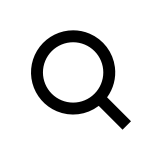Hugo Roelandt
Interview with Hugo Roelandt (fragments), conducted by Luc Mishalle (1980) and Roger D’Hondt (1977)
► CLICK HERE TO LISTEN TO THE AUDIO
“The first performance that I consciously called a performance and which rightfully bore my name happened in 1974, in Aalst. These performances developed naturally for me. I see them as an evolution of my previous work. Firstly, I rejected the idea of an artist locked away in an attic, creating “art” and feeling superior to others. Secondly, at the time, I was doing photography, but I refused to photograph things as they were, as they appeared… What interested me was deliberately altering certain situations and then capturing them. Photography was a suitable tool for that. But over time, the act of altering became more important than the photography itself, making the step toward 'live' situations a small one.
By the way, those early 'performances'—let's just call them that—were not something I initially labeled as performances myself. It was only when the medium gained recognition that people started calling what I was doing by this name that was in vogue at the time. At first, I resisted that; I didn’t want to be a 'performer', because it felt like a label being forced onto me. What I did was simply a reaction—I didn’t want to be a painter, a sculptor, or even a photographer. I just wanted to do what I felt I had to do, not to be a performer specifically. Later, I tried to make a joke out of it by getting “performer” printed on my passport, but that didn’t work. They didn’t recognize it at the civil registry.
Specifically because it was the beginning of performance, I wanted to banish everything that was normally accepted as existing, to truly start over. That’s why I tried to paint a person into the wall – that person happened to be Mark Verreckt. I simply placed him in front of a wall and tried to unite him and the wall using paint, until he disappeared. Because everything—especially thinking—is supposedly centered around humans. And if you paint away a person, you are essentially erasing the fundamental element.
From that first performance to the Kaaitheater festival, there was an evolution—one thing led to another—reactions to the previous work until I realized that, in this so-called renewal, I was getting stuck again. Not immediately, but eventually, you fall back into a system, into being used, into rules that get established, and so on... But I’m jumping ahead a bit.
In the beginning, I tried to limit myself to two performances per year, but to prepare them thoroughly and create the most complete image possible. However, as the medium became more popular, I started doing a bit more, although I never aimed to do a lot or to establish a fixed cycle, as is common in theater.
I don’t ask myself whether performance is theater or not, or whether it belongs to visual arts or not. First of all, every performance I do significantly differs greatly from the previous one. Sometimes I might use more theatrical techniques; other times, I might focus more on visual effects.”
Interview with Hugo Roelandt (fragments), conducted by Luc Mishalle, published in CET-Bulletin, no. 5, June-August 1980
“For me, performance represents a more total medium. I arrived at it because the techniques I previously used were too limited to work with. Performance is a broader medium. It allows me to align more with current technological developments.
I have little faith in the idea of an artist suffering alone in their studio, creating a masterpiece. The creation of an artwork is the most important phase, even more important than the final product, which only holds historical or economic value. Performance establishes direct contact with the audience. For me, this is the result of years of critical research into the medium of art.
Artistic plans, I wouldn’t call them plans but rather artistic evolution, are difficult to determine far in advance because we work in a very time-sensitive manner. We will place more emphasis on behavioral patterns—both our own and those of the audience—which will likely result in a more aggressive relationship between the two.
For me, art is always political. Not in terms of party affiliation, but within a social context. That doesn’t mean I like politically engaged art—I find that subject too narrow. The fact that I express myself at all means I am aware of certain things that reflect society. The way I express myself is a reflection of that. For example, I don’t play along with the gallery system, which is commercially structured.”
Interview with Hugo Roelandt (fragments), conducted by Roger D’Hondt, published in De Voorpost on July 24th 1977
